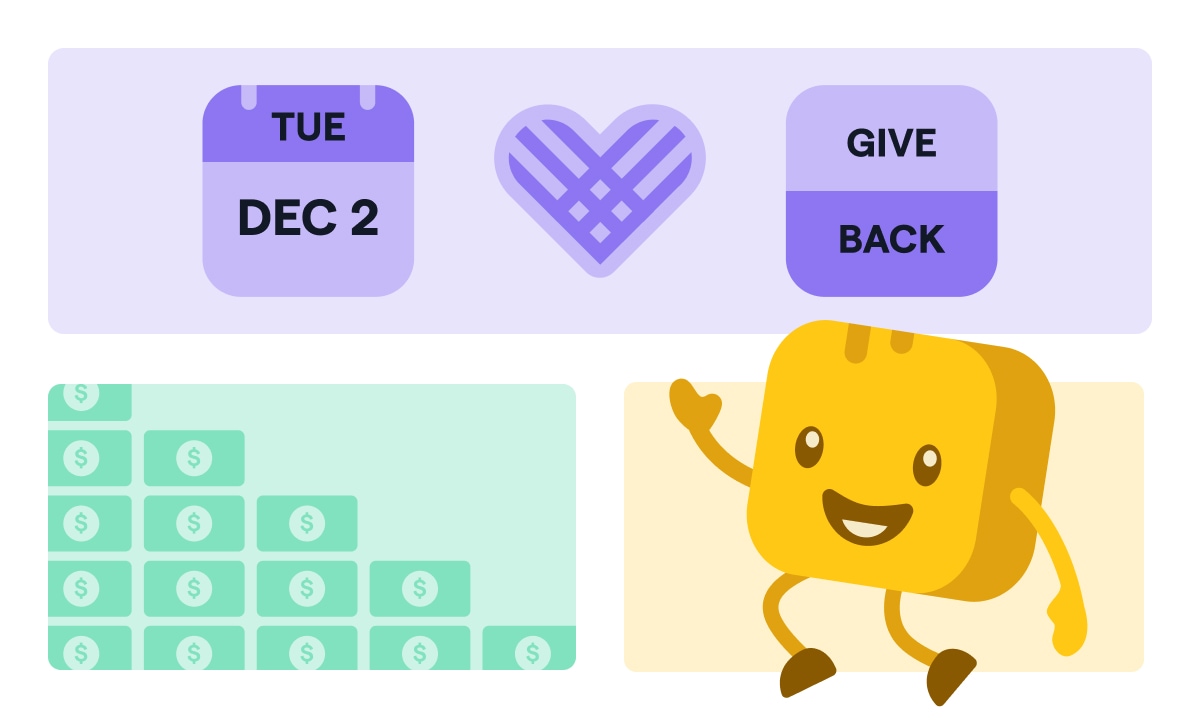Table of contents
Table of contents
Charitable giving brings unimaginable good upon the world we live in — almost $2.7 billion last year. Unfortunately, some people choose to capitalize on this generosity to line their own pockets, posing as legitimate charities.
Charity scams have risen exponentially in recent years, as fraudsters take advantage of the public’s kindness. In fact, according to the FBI’s 2020 Internet Crime Complaint Center annual report, the number of charity fraud cases increased from 493 to 659 in just two years (and those are just the cases that were reported). In total, criminals stole $4,428,766 in funds that were supposed to go to good causes in 2020.
Charity fraud is a serious and important issue every changemaker needs to understand. Below, we explain what charity scams are, how to identify a scam, and what to do if you believe you stumble across charity fraud. Plus, we’ll outline a few bogus scams every supporter needs to know about.
What is a charity or donation scam?
A charity scam is where an individual poses as a nonprofit organization or other cause to convince people to give them money. Scammers will coax people into giving online, in person, or over the phone, hoping to draw out funds from the goodness of others.
While charity fraud can take place at any time or place, they have a tendency to spike during the holidays (as individuals are seeking to increase tax breaks through charitable giving) or during times of natural disasters, social unrest, or other tragedies. For example, the FBI warned the public of the rise in donation scams throughout the COVID-19 pandemic.
Unfortunately, these charitable dollars will never go to help a good cause. Instead, these funds are pocketed by scam artists and are rarely recovered.
How to donate safely
As the number of charity scams increases, it’s important to do your research, ask questions, and only give to causes you know and trust. Below, find several tips to help you avoid charity fraud online, over the phone, and in-person:
- Always do your research: Always do your research before you give a single dime to charity. Use databases such as Charity Navigator, the Better Business Bureau’s Wise Giving Alliance, or CharityWatch to ensure you’re donating to a reputable, tax-exempt organization.
- Ask questions: If you are not giving directly to an official, 501(c)(3) registered nonprofit (such as a fundraiser for new school uniforms or a crowdfunding campaign for a personal cause), ask specific questions. Learn exactly how funds will be used, and what will happen with any leftover contributions (e.g., will it be given back to donors, used for administrative costs, or donated to another organization?).
- Keep a running log of donations: You should always keep an account of all contributions made to charity. Write down which organization you donated to, the amount donated, the payment method used, and the date you made your contribution.
- Give to verified campaigns: If you are making a charitable contribution through a fundraising site, like Givebutter, try to only give to verified campaigns. These campaigns have been verified by Givebutter to come through registered 501(c)(3) nonprofits, and all donations are tax deductible (more on this below).
- Only donate to causes you know: Sometimes, you will give to causes you care about that aren’t part of a registered charitable organization. This could be a charity golf tournament in your neighborhood, a T-shirt drive for the girl’s soccer team, or a community-wide effort to rebuild after a tornado. In these cases, try to only give to efforts that are organized by someone you know and trust.
How to identify a charity scam

With the number of charity fraud cases on the rise, it’s important to learn the warning signs. Do not give to any organization that implements the following tactics:
- False thank-you messages: Sometimes, a scammer will call or email an individual thanking them for a contribution they never made, then asking for payment. If you’re being thanked for a donation you can’t remember, don’t offer any financial information or click any suspicious links.
- Sentimental claims: Many times, scammers will offer a long-winded sob story to guilt donors into giving. However, they offer little detail as to how these funds will be used.
- Asking for personal information: As a best practice, you should never, ever offer personal information over the phone, such as a Social Security number, bank account information, or your credit card number. These days, most charities have secure ways to pay on their websites or through a crowdfunding site.
- Fake contact information: While scam artists may make up a fake charity to encourage donors to give, others imitate legitimate, trusted organizations. Always try to spot fake information before donating. For example, web addresses for most nonprofits end in .org, not .com. Make sure an email is coming from the nonprofit’s domain ([email protected], not Gmail) and verify that the email is listed on the website.
- Pressure tactics: Most nonprofits leverage a team of passionate volunteers to help hit their fundraising goals—volunteers who will respect your time, space, and wallet if you don’t want to give. If a supposed nonprofit won’t take “no” for an answer, it’s a red flag.
- Odd requests: Use this golden rule—if something seems fishy, it probably is. If the person on the phone is asking you to direct funds in a weirdly specific way (like a money order transfer or donating a Visa gift card), if you are pressured to hit some arbitrary deadline (most nonprofits fundraise year-round), or if words are misspelled in an email, don’t donate to the organization.
We’d like to share these words of wisdom and warning from our Trust and Safety team:

“The most important signal to look out for on a campaign is the language and description. It may sound kind of silly at first, but reading the description of how funds are planning to be used can really help someone determine if this is too good to be true.” —Rachid Yousfi, Trust and Safety at Givebutter
He continues, “Oftentimes, short and/or vague descriptions of what the cause is about with little to no description about how they plan to use the funds should raise red flags. Additionally, redundancies, grammatical errors, and vocabulary all play a huge role in determining the seriousness of a campaign.”
TL;DR, if something reads a bit sketchy to you, it probably is.
Common scams to look out for
The number of scams that occur online vary widely. However, in recent years there are three prominent themes you should watch out for:
1. Scams impersonating real charities 👀
Scam artists from fake charities are fairly easy to spot. You can simply enter the organization into a reputable database such as CharityNavigator.org, quickly realizing it’s not registered as a tax-exempt organization with the IRS.
However, this isn’t always the case.
- What it is: A scam where a fraudster impersonates a reputable nonprofit. For example, recently, The United Way alerted their supporter base that fraudsters were using their brand to commit identity theft.
- How to spot it: In these cases, scam artists contact victims outside the official website. With the United Way example, victims were contacted via text message or Facebook with a message stating they were “eligible for a cash grant,” then asked for personal information such as banking information, social media passwords, date of birth, or their mother’s maiden name.
- What to do if you see it: Contact the organization directly, then report the fraud to the FTC.
2. Disaster relief scams 🙅
The public can become extraordinarily generous after a natural disaster. Unfortunately, this is typically coupled with an increase in online scams.
- What it is: These are charity scams that follow a high-profile disaster. For example, in winter 2021, following the tornadoes that swept across Kentucky, the FBI and AARP warned Lexington residents about charity scams.
- How to spot it: In these instances, the public should be extremely cautious of donating through links sent through SMS or social media, choosing to donate via an organization’s official website instead. In addition, law enforcement warned individuals of scam artists committing insurance fraud or scams from unethical contractors.
- What to do if you see it: Report the scam to the FTC, then take to social media and/or the press to garner public awareness about the scam.
3. Scams during wartime or other tragedies 😱
During a humanitarian crisis, the number of online scams tends to escalate. Therefore, you need to be alert about scam artists capitalizing off a very public tragedy.
- What it is: These scam artists pretend to give money to refugees or victims of a crisis. For example, in late March of 2022, the BBC reported that there were already 196 reports of fake websites claiming to raise funds for the war in Ukraine.In some instances, scam artists pretended to be Wladimir Klitschko, whose brother Vitali is the mayor of Kyiv.
- How to spot it: With these types of charity scams, fraudsters email solicitations to potential donors, claiming the money would be used to support refugees or other victims. These emails contained links to malicious websites that stole personal and financial information from donors.
- What to do if you see it: Alert the FTC and the FBI immediately.
P.S.: Here are 5+ safe, verified ways to donate to Ukraine if you’re looking!
What to do if you think you’ve been scammed

Unfortunately, even if you do your research, the possibility of falling prey to a charity scam still exists. Here’s what individuals and organizations should do if they believe they’ve been scammed.
What to do if you’re a donor who’s been scammed
The Federal Trade Commission (FTC) advises everyone to always do their research before giving to charity. If you spot any red flags, you should consider giving to a different organization (remember, there are millions of organizations doing good in the world!).
If you believe you’ve been scammed, take the following actions:
- Report fraud: To report a scam, go to ReportFraud.FTC.gov.
- Fill out any details: The Report Fraud website under the FTC has an online form where you can report any charity scams. Fill out any and all information you recall, and follow the prompts to submit it to the government.
- Alert your state charity regulator: Finally, go to the National Association of State Charity Officials website and share any information related to the scam. Your report can help other donors from being victimized by the same scam artist.
- Tell the fundraising platform’s security team: Legit fundraising sites like Givebutter have a trust and safety team you can reach out to at any time by clicking the chat bubble in the corner of your screen.
What to do if you’re an organization that’s been impersonated by a scam artist
If you are a nonprofit organization that’s being impersonated by a fraudster, it’s important to alert law enforcement and your supporters as soon as possible. If you believe a scam artist is using your charity name to swindle donors out of funds, take these steps:
- Alert the FTC: Even if you weren’t a victim of a charity fraud case, you need to alert the government. Follow the prompts to report the scam artist through the FTC’s Report Fraud form.
- Alert the FBI: If scam artists are setting up bogus websites or sending donors fraudulent emails under your organization’s name, you need to alert the FBI. Report the donation scam through the Internet Crime Complaint Center’s website.
- Alert the fundraising platform’s trust and safety team: If the campaign is hosted on Givebutter, you can reach out via live chat, email, or on any of our social media accounts.
- Alert your supporters: Lastly, you need to alert your donors as quickly as possible. Write a blog post, send an email blast, and leverage social media to get the word out about potential scam artists impersonating your organization. Remind donors to never offer personal information related to financial institutions, Social Security numbers, or other details over the phone or anywhere online (except for your website or fundraising page).
How to use Givebutter to create a safe, verified campaign
To cut down on charity scams, all 501(c)(3) registered organizations are eligible to create verified campaigns on Givebutter. This allows your organization to carry a special badge and exclusive benefits, and will give supporters peace of mind knowing they are giving to a reputable charity.
As the organization behind a verified campaign, you will have access to the following:
- Automated tax-deductible donation receipts: All of your donation receipts will contain your EIN number, so donors know you come from a registered, tax-exempt organization.
- Text-to-donate short code: Typically, supporters should be wary of any charity SMS message that contains donation links. However, as a verified organization, you can access Givebutter’s text-to-donate short code so supporters can easily donate through their phone.
- Shorter pending periods: Verified nonprofits can have access to their funds within 48 hours, versus the 72-hour pending period for unverified campaigns.
- ACH payments: Verified nonprofits can use ACH payments as a lower-cost payment option, with no setup required.
To verify your nonprofit on Givebutter, you will take the following actions:
- Verify your email: Verify your organization’s email address on Givebutter. If your email address must have the same domain listed as the URL for your organization under the Guidestar Database, your verification will automatically be approved.
- Get verified: On the Home tab inside your Givebutter account, select “Get verified” and follow the prompts for verification.
Learn more about how Givebutter keeps users secure —>
What to do if you think you see a scam on Givebutter
Givebutter has a dedicated Trust and Safety team to ensure the safety of donors on our platform. With that being said, there is always a chance that a suspicious user (i.e., a scam artist) gets through.
Our Trust and Safety team wants to leave you with this advice:
The internet is a very accessible place. Therefore, it’s important to always do your own due diligence by looking up every organization behind a fundraising campaign.
Changemakers are constantly sharing their campaigns across multiple platforms because they’re trying to raise funds for a cause they love. If you found a campaign shared to you privately (e.g., through a Facebook message, text message, or emailed directly to your inbox), check the language on the campaign’s donation page and the organization’s official webpage to ensure that this organization is raising funds for this cause. The same goes for an individual cause—always check the individual’s social media pages to ensure they are actually raising funds for a personal cause or on behalf of a friend.
See anything suspicious? Reach out to Givebutter’s award-winning support team at [email protected] or via the chat box on our website. Be sure to send us the link to the campaign and how you discovered it. This will not only help us track down the scammer, but it will also give us insight into scam activity which helps us be more proactive against this behavior.
Give safely through Givebutter to slow the spread of donation scams
In recent years, charity scams have risen exponentially. Scam artists capitalize off people’s goodwill and high-profile tragedies to swindle donors out of their hard-earned funds.
To cut down on charity scams, you should always do your research before giving to a fundraising campaign. Be wary of a solicitation request that seems too pushy, doesn’t offer details on how funds will be used, collects funds through suspicious links, or has a large number of typos within the description. If you do believe you’ve fallen prey to a scam, alert the FTC immediately.
To cut down on charity scams, Givebutter has launched verified campaigns. Verified campaigns are accessible to registered 501(c)(3) organizations, giving supporters peace of mind that they’re giving to reputable organizations.
To see other features related to Givebutter’s platform and how we try to cut down on spam, take a tour today.
.svg)






%20(1).png)











.webp)

